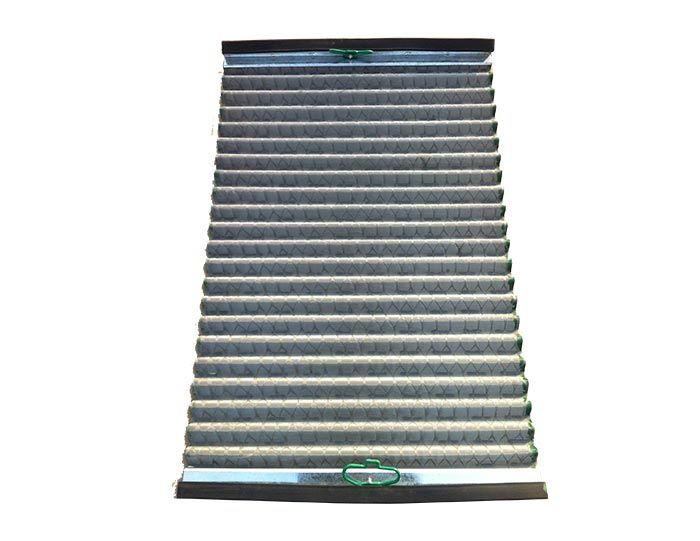Shaker screen or you can say shale shaker screen too, is a type of mechanical screen, aim for take solids out or separate solids from drilling fluid (mud). Usually it’s made by stainless steel, polyurethane or composite frame. It’s a spare part of shale shaker and combined shaker frame by stainless screw and wedge block.
The shaker screens performance affected by those factors.

Material Factors
Particles in dry bulk materials are noted in a variety of shapes, sizes, surfaces, densities, and moisture content. Each condition must be taken into account when attempting to predict screen performance, through its effect on capacity in terms of weight passing a given screen opening per-unit area. The combined effects on screen performance, or “screen-ability”, of particle shape, surface texture, and surface or internal moisture, are beyond the reach of empirical solutions based only on size and density, independent of these variables. More exact information on their influence needs to be gained from actual laboratory testing.
Size And Shape
The shape of an individual granule may be angular, spherical, acicular, ovaloid, flaky, or slabby. They can be combined in the same material, as sawdust in wood flakes. Separation cut-point sizes in most screening applications range downward from 4” to 325 mesh (.0018”). The cut-point defines the smallest particle size retained on the screen, and the maximum undersize particle passing. Unless the particle is acicular, platy, ovaloid or a perfect sphere, it will be probably (but not necessarily) be sized by its largest dimension.
DENSITY
For any given shape and size distribution, bulk density in lb./cu. ft. (PCF) for any material will be precisely proportional to its specific gravity. Screening is essentially a volumetric measurement, but capacity, or the rate of passage through the screen, is typically charted in units of weight per unit time, based on a standard bulk density of 100 PCF. The actual rate for a material of different bulk density has to be adjusted by the ratio PCF: 100. Tables of bulk density for various materials can be discovered in most material handling publications.
SIZE DISTRIBUTION
The size distribution of particles in a bulk granular material is the primary characteristic that governs the rate of undersize passage through a screen opening that is larger than the smallest particle and smaller than the largest particle in a representative sample of the material. Size distribution is measured by sieve analysis, using a series of standardized wire mesh sieves with square openings that progress, in the commonly used Tyler standard scale7, at the fixed rate of from 1.05” to.0029” (200 mesh). The size distribution is given in the weight percent of each fraction between successive sieves in a series. If the weight is plotted on the y-axis against the mean size of each fraction of the x -axis, the result will resemble a frequency distribution curve.
 Linear Motion Shale Shaker In Drilling Rig
Linear Motion Shale Shaker In Drilling Rig  Oilfield Mud Cleaner
Oilfield Mud Cleaner  Drilling Fluid Decanter Centrifuge
Drilling Fluid Decanter Centrifuge  Drilling Mud Desander
Drilling Mud Desander  Hydrocyclone Desilter
Hydrocyclone Desilter  Centrifugal Pump/Centrifugal Mud Pump
Centrifugal Pump/Centrifugal Mud Pump  Shear Pump
Shear Pump  Jet Mud Mixer
Jet Mud Mixer  Horizontal Mud Agitator
Horizontal Mud Agitator  Constant Pressure Drilling Fluid Mud Gas Separator
Constant Pressure Drilling Fluid Mud Gas Separator  Mud Gun
Mud Gun  Mud Tank
Mud Tank  Solids Control System Vacuum Degasser
Solids Control System Vacuum Degasser  Flare Ignition Device
Flare Ignition Device  Diesel Tank
Diesel Tank  Submersible Slurry Pump
Submersible Slurry Pump 






































